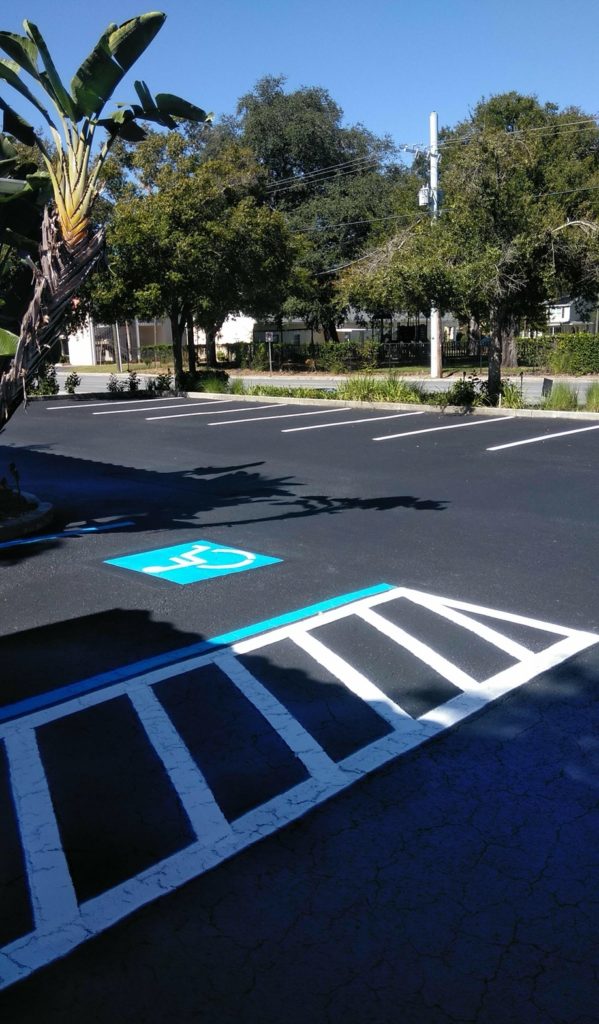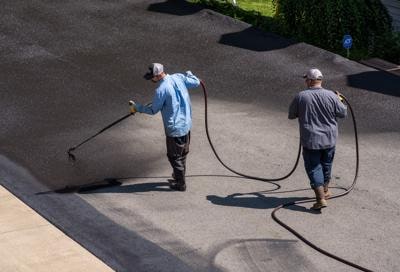Swift Solutions for Asphalt Spot Repair: Optimum Securing Strategies
Swift Solutions for Asphalt Spot Repair: Optimum Securing Strategies
Blog Article
Cold Mix Asphalt Vs. Hot Mix Asphalt: Which Is Right for You?

Composition Differences
Cold mix asphalt is generated by emulsifying the asphalt binder with water and an emulsifying agent before blending it with aggregate. The warm mix asphalt manufacturing process includes heating up the aggregate and asphalt binder separately before incorporating them at the asphalt plant.
Furthermore, chilly mix asphalt has a tendency to be much less thick and much more adaptable than warm mix asphalt. This flexibility makes it better fit for areas with greater degrees of movement, such as driveways or roadways with rush hour. On the other hand, hot mix asphalt is understood for its high durability and resistance to rutting and splitting, making it a preferred option for freeways and high-traffic roads where longevity is important.
Installment Process Differences
The procedure of installing chilly mix and hot mix asphalt displays significant differences in their treatments and demands. Cold mix asphalt, being a much more versatile material, can be applied straight from the bag or container onto the fracture or damaged area. It needs very little preparation job, such as cleaning up the area and compacting the chilly mix with hand tools. This makes it a hassle-free choice for quick and short-lived repairs. In comparison, hot mix asphalt necessitates a more sophisticated installment process. It includes heating up the mixture to high temperature levels before laying it down on a properly ready base. The prep work consists of compacting the base, using a tack coat, and using heavy equipment like pavers and compactors for a smooth and resilient surface. Because of the home heating requirements, hot mix asphalt installments are typically brought out by specialists with specific equipment, making certain an extra permanent and structurally sound result.
Resilience and Long Life Aspects
When considering asphalt alternatives, resilience and durability are critical variables to evaluate for long-term sidewalk performance. Hot mix asphalt (HMA) is known for its remarkable resilience and long life.
In terms of longevity, HMA normally exceeds CMA as a result of its remarkable strength and resistance homes. HMA sidewalks have a longer life span, requiring less constant repair services and maintenance, which can equate to set you back financial official site savings in the future. Furthermore, HMA sidewalks are much more conveniently adjustable to fulfill particular task requirements, additionally enhancing their toughness.
Cost Factors To Consider
Considering the monetary effects is an important facet when evaluating the option in between hot mix asphalt (HMA) and chilly mix asphalt (CMA) for sidewalk tasks. While the initial expense of warm mix asphalt is generally more than that of cool mix asphalt, HMA frequently supplies an extra cost-effective service over time as a result of its superior sturdiness and longevity. HMA is understood for its capacity to withstand hefty traffic lots and harsh climate condition, reducing the need for regular repair services and maintenance. On the various other hand, cold mix asphalt is a lot more budget friendly upfront but may require more regular patching and resurfacing, bring about higher maintenance expenses over time.
In enhancement to material costs, it's important to consider the expenses related to installation and upkeep when comparing HMA and CMA. HMA typically requires customized devices and competent labor for proper installment, which can affect overall task expenses. Conversely, CMA is much easier to deal with and can commonly be applied making use of less complex methods, potentially decreasing setup expenses. Eventually, the decision in between HMA and CMA ought to consider not just the preliminary cost yet likewise the lasting monetary implications to figure out the most cost-efficient option for the details pavement task.
Environmental Impact Contrast
Contrast of the environmental effects in between warm mix asphalt (HMA) and cold mix asphalt (CMA) exposes unique distinctions in sustainability practices. HMA production needs heats, causing raised Homepage energy consumption and greenhouse gas discharges. The procedure additionally launches volatile organic compounds (VOCs) and dangerous air toxins (HAPs) into the environment. In contrast, CMA is produced and applied at lower temperatures, minimizing power use and exhausts significantly. The lower production temperatures of CMA lead to reduced fuel usage and lower levels of CO2 emissions, making it a more eco-friendly choice.
In addition, using CMA frequently includes recycling existing asphalt sidewalk, advertising resource conservation and reducing the quantity of waste sent out to garbage dumps. This recycling aspect better boosts the sustainability of CMA contrasted to HMA. In general, when considering the ecological influence, CMA becomes a more eco lasting option due to its reduced energy requirements, lowered exhausts, and the capacity for reusing existing products. By choosing CMA over HMA, roadway building and construction jobs can add favorably to environmental preservation efforts.
Final Thought
Finally, the option in between cold mix asphalt (CMA) and hot mix asphalt (HMA) relies on various aspects such as make-up, installation process, durability, durability, price, and environmental impact. asphalt patch repair. While CMA supplies a quick and economical service for minor repair work, HMA makes sure superior resilience and durability for rush hour areas. Consider these elements very carefully to establish which kind of asphalt is the right choice for your paving needs

Considering the monetary effects is an essential element when evaluating the option in between warm mix asphalt (HMA) and cold mix asphalt (CMA) for pavement tasks. While the initial cost of hot mix asphalt is commonly higher than that of cold mix asphalt, HMA usually gives a more economical solution in the long run due to article its superior sturdiness and long life. cold mix asphalt.Contrast of the ecological effects in between warm mix asphalt (HMA) and cold mix asphalt (CMA) exposes distinctive differences in sustainability practices.In conclusion, the option in between cold mix asphalt (CMA) and warm mix asphalt (HMA) depends on different elements such as structure, setup procedure, toughness, longevity, cost, and ecological influence
Report this page